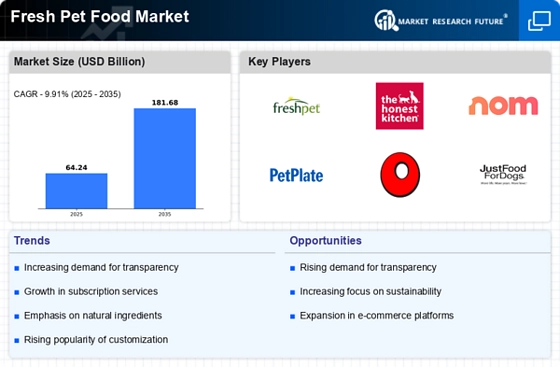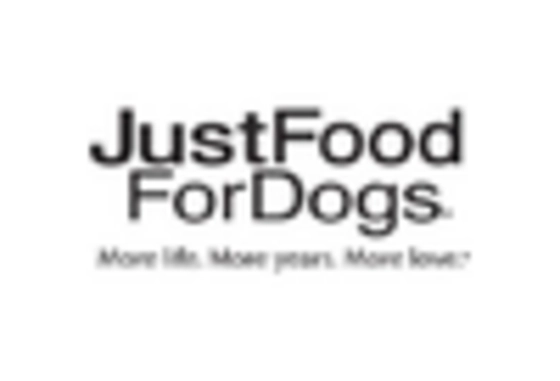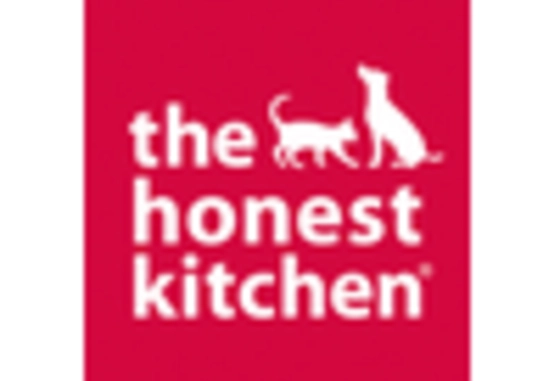The Fresh Pet Food Market is currently characterized by a dynamic competitive landscape, driven by increasing consumer demand for high-quality, nutritious pet food options. Key players are actively engaging in various strategies to enhance their market presence and operational efficiency. Companies such as Freshpet (US), The Honest Kitchen (US), and Nom (US) are at the forefront, each adopting distinct approaches to solidify their positions. Freshpet (US) emphasizes innovation in product development, focusing on fresh, minimally processed ingredients, while The Honest Kitchen (US) leverages its commitment to transparency and human-grade food standards. Nom (US) appears to be concentrating on direct-to-consumer sales channels, enhancing customer engagement through personalized nutrition plans, which collectively shapes a competitive environment that prioritizes quality and consumer trust.
In terms of business tactics, companies are increasingly localizing manufacturing to reduce supply chain complexities and enhance product freshness. The Fresh Pet Food Market is moderately fragmented, with several players vying for market share, yet the influence of major companies is palpable. Their collective strategies, including supply chain optimization and regional expansion, contribute to a competitive structure that fosters innovation and responsiveness to consumer preferences.
In August 2025, Freshpet (US) announced a strategic partnership with a leading veterinary organization to develop a line of specialized fresh pet foods tailored for pets with specific health needs. This collaboration not only enhances Freshpet's product offerings but also positions the company as a leader in the health-focused segment of the market, potentially attracting a new customer base concerned with pet wellness.
In September 2025, The Honest Kitchen (US) launched a new line of freeze-dried raw meals, which reflects a growing trend towards raw feeding among pet owners. This product innovation is significant as it caters to the increasing demand for raw diets, thereby expanding their market reach and reinforcing their brand as a pioneer in high-quality pet food.
In July 2025, Nom (US) expanded its distribution network by partnering with major online retailers, enhancing its visibility and accessibility to consumers. This strategic move is crucial as it aligns with the ongoing shift towards e-commerce, allowing Nom to tap into a broader audience and streamline its supply chain, thus improving overall efficiency.
As of October 2025, the Fresh Pet Food Market is witnessing trends such as digitalization, sustainability, and the integration of artificial intelligence in product development and customer engagement. Strategic alliances are increasingly shaping the competitive landscape, enabling companies to leverage shared resources and expertise. Looking ahead, competitive differentiation is likely to evolve, with a pronounced shift from price-based competition to a focus on innovation, technology, and supply chain reliability, as companies strive to meet the sophisticated demands of modern pet owners.


















Leave a Comment